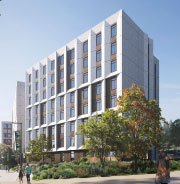Translate
University Housing works in concert with a licensed pest control company in our pest control response protocol.
Step 1: Please read the following handout:
Step 2: Input a work order using your Cal Poly portal.
-
Housing staff will reach out for more information.
-
Please collect any suspected bed bugs in a zip lock bag for review by housing staff and our professional pest control company. You can attach a picture or video of the pest in the work order.
- The resident will be asked to keep housing staff informed by e-mail of any changes to their situation (e-mail to housingservices@calpoly.edu).
Step 3: If a problem has been identified as a positive case, the contractor will assess the best options for treatment based upon case severity.
-
Treatment will be coordinated on a case-by-case basis.
Step 4: Residents are encouraged to launder personal belongings (clothes, pajamas, sheets, blankets, etc) which may have been in contact with the bedding. Wash everything that is washable.
-
These items can be heat-treated in a hot dryer for 45 minutes.
Step 5: University Housing staff will monitor the situation:
-
Professional staff will schedule with the resident a time within 24 to 36 hours that the traps and bedding can be re-inspected.
-
If bugs are present in the traps:
-
The bugs will be collected by professional staff.
-
Following identification, a licensed pest control company will be consulted for treatment. The pest control company will assess the infestation. Treatment will be based on their inspection and recommendation.
-


